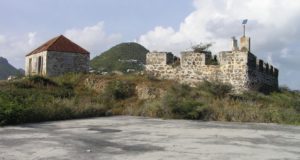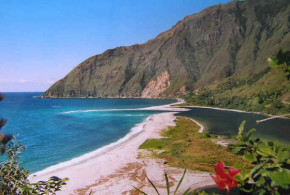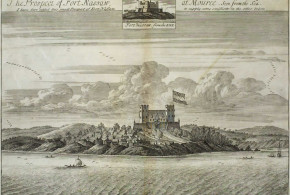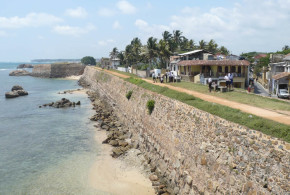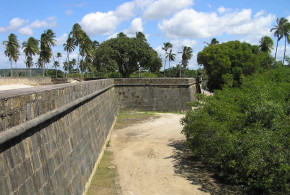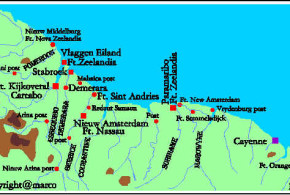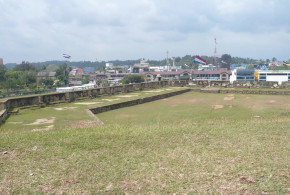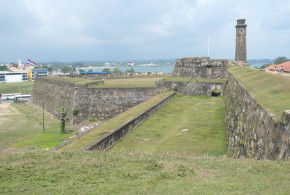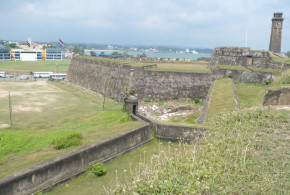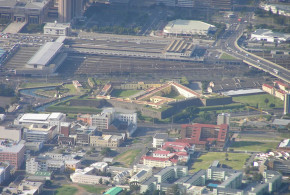Written by Peter Reynders
There have been a number of early European based ‘monopoly companies’ trading in Asia. The combined impact of the Portuguese Estado da India, the first practitioner of the monopoly product principle, the Muscovy, the Ostend, the Swedish and the English East India Companies, the VOC (Dutch East India Company) and the many smaller enterprises of the vast, old and highly developed intra-Asian trading network is often overstated. The few percentage points of the total Asian economic turnover that went to Europe and the number of European people living and trading in Asia compared to the Asian population was relatively insignificant in the two centuries of the VOC. None of the activities of these companies, however, is as significant as the role the VOC played in Australian’s early maritime history, because it was the VOC that made the Southland’s existence known to the world. It first placed our continent on the world map enabling better known mariners such as Dampier, Cook and Flinders to enter the story.
Of the 54 recorded European ships that sailed into Australian waters before 1770, 42 were VOC ships. “Sloepie” the first ship built here by Europeans, was built by a shipwrecked VOC crew. Our first European immigrants, Wouter Loos and Jan Pelgrom De Bye, convicted criminals, dropped off on the mainland in 1629, were VOC employees. The first armed conflict on land in our history between two groups of whites was between a VOC crew and its mutineers. The first recorded white ‘Southland baby’ was born aboard a VOC ship moored on our coast. The first recorded Europeans to chart part of our coast were Captain Willem Janszoon and his crew in Duyfken a small vessel bought second hand for ƒ 2200, heralding the beginning of our written history in 1606. The first recorded navigator to circumnavigate our continent and first prove that it is an island, and that it must have an east coast, lead the VOC’s exploratory forays. His name was Abel Tasman. The first pictures drawn by Europeans of our coast and of some of our wildlife were by artists aboard VOC ships.
That is not to suggest that the London based East India Company (EIC) has no connection with early Australian history. Our first European shipwreck, on the coast of Western Australia in 1622, the Tryall, was an EIC ship skippered by John Brookes. Like the Batavia, it too ended up as a horror story, but less heroic, less complicated, less well known.
With the exception of Captain Gonzal, who provided enthusiastic reports about this continent and its people, VOC captains invariably reported unfavourably on the trading potential with Aboriginal peoples. ‘Too poor to dress themselves’, ‘most miserable creatures on earth’ they would write in their logs. The VOC, having visited, sought trade, searched for their own shipwrecked vessels and tried to chart dangerous coastal features during the 17th century, did not deliberately return at all, apart from Gonzal in 1756, during the 18th century, arriving when they did only by accident.
Australians on the east coast know little about the VOC. In 2006 it was 400 years since it began our written history, in fact in early 1606 the Dutch explorer Willem Janszoon encountered and then charted the shores of Australia’s Cape York Peninsula. But many historians, researchers, educational bodies and media rely on Britsh sources in telling our story. Our national TV broadcasters usually focus on British history when it comes to our beginnings, often without even offering an Australian viewpoint. We watch Henry VIII and his wives, Elizabeth I, the Battle of Hastings, discuss the Magna Carta, as if they are relevant here, etc. but they hardly constitute our own early history. There are ABC programs on such things as the 400th anniversary of Guy Fawkes’ “Gunpowder Plot”, interesting but rather irrelevant to our history. In 1602, no Englishman, including Guy Fawkes, had ever heard of this Southland, other than perhaps as a legend. Yet in 2002 there was not a single program about the 400th anniversary of the founding of the VOC, the body that revealed Australia to the world.
BIBLIOGRAPHY:
– Godard, Philippe “First and Last Voyage of the Batavia” 332 pp.
– Playford, Phillip “Voyage of Discovery to Terra Australis” 113 pp. Willem de Vlamingh’s intrepid voyage to Australia 1696-1697
– Playford, Phillip “The Wreck of the Zuytdorp” 36 pp. West Australian Historical Society
– Playford, Phillip “Carpet of silver: the wreck of the Zuytdorp” xii, 260 pages, University of Western Australia Press, 1996-1998, Perth, Australia.
– Sigmond, J. P. and Zuiderbaan, L. H. “Dutch discoveries of Australia: shipwrecks, treasures and early voyages off the West Coast” 176 pp. ills. 1979 (1st English edition of the 1976 original Dutch title “Nederlanders Ontdekken Australie”), Adelaide, Australia.
– Tooley, Ronald Vere “Early maps of Australia The Dutch Period” 27 pp. 30 illus. Map Collectors’ Circle, 1965, London, UK. Examples from the collection of R.V. Tooley with bibliographical notes.
 Colonial Voyage The website dedicated to the Colonial History
Colonial Voyage The website dedicated to the Colonial History





